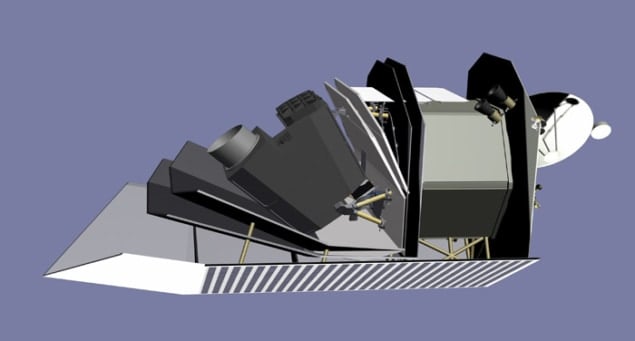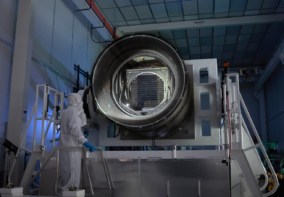
Today an American non-profit organization announced a space mission to map the inner solar system for evidence of asteroids that could strike the Earth. The five-and-a-half-year voyage, which the organization describes as the first privately funded deep-space mission, is due for launch in 2016 or 2017.
The ambitious plan is organized by the B612 Foundation. Named after the asteroid home of Antoine de Saint-Exupéry’s “Little Prince”, it aims to “open up the frontier to space exploration and protecting humanity on Earth”. That protection focuses on mapping the orbits of the tens of thousands of near-Earth asteroids with diameters of at least 140 m that could strike the Earth with an explosive force of at least 100 megatonnes of TNT. That is 3.5 times the diameter of the object that struck Tunguska, Siberia, in 1908, uprooting up to 80 million trees and shattering windows hundreds of kilometres away.
According to B612, more than 98% of such asteroids remain totally unknown to astronomers. The mission aims to find and track more than 90% of them. “Our goals are primarily philanthropic, in doing our part to save the planet, or somewhere on the planet, from an unlikely but potentially enormous disaster,” says Clark Chapman, a planetary astronomer at the Southwest Research Institute in Boulder, Colorado, who is the foundation’s secretary.
More than saving the Earth
Chapman adds that the foundation foresees other benefits from the mission. “Of course, we also have subsidiary scientific goals. And our mapping of these asteroids is a necessary precursor to identifying objects that could be mined for space resources in the future – or visited by astronauts as tests of systems that could eventually send people to Mars,” he says.
The spacecraft, called Sentinel, will take off from NASA’s Kennedy Space Center in Florida aboard a Falcon 9 rocket. A gravitational slingshot manoeuvre off Venus will put the craft into an orbit around the Sun close to that of Venus.
The craft will carry an infrared telescope to map the locations and trajectories of Earth-crossing asteroids. “These are very dark objects,” explains Scott Hubbard, professor of aeronautics and astronautics at Stanford University and the programme architect for B612. “You have to look in the thermal infrared to detect them.”
Ball Aerospace of Colorado – which developed the Spitzer and Kepler space telescopes – has designed the Sentinel telescope and will build it under a fixed-price contract. The instrument will feature a 50 cm aluminium mirror to collect infrared signals in a large field of view. Images will be recorded by an array of 24 million pixels cooled to –133 °C.
Working with NASA
The craft will transmit the data that it gathers via NASA’s deep-space network, which Sentinel will also use for tracking and navigating, to the Sentinel Operations Center in Boulder. That centre will then use NASA’s Minor Planet Center in Cambridge, Massachusetts, to forward the data to educational and research institutions, and to governments. NASA’s Jet Propulsion Laboratory in Pasadena, California, will carry out a comprehensive hazard analysis on the information, determining the orbits of individual asteroids and assessing their threats to the Earth.
The telescope will scan the entire night half of the sky every 26 days to identify every moving object. Repeated observations of individual asteroids will permit astronomers to calculate their orbits and predict their positions accurately for a century or more in the future.
The nature of the mission has changed since it was conceived about 10 years ago. “The original genesis was planetary stewardship – an interest in mitigating a threat,” Hubbard explains. “But we realized that you can’t mitigate something you can’t find.”
The total cost of the mission remains to be calculated but Chapman expects to announce a “fairly firm cost” later this year. Meanwhile, Hubbard says that foundation is seeking funds for the venture. “We’ve had a few angels who have provided seed funding to look at the feasibility and the technical size [of the project],” he says. “We’re somewhere between angel investment and round one of venture capital.”



